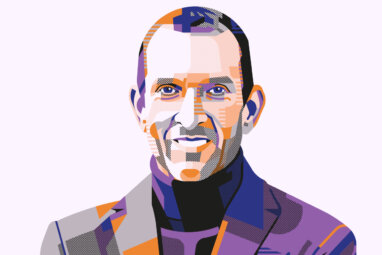Creating a Culture Where the Best Ideas Win
At Enterasys Networks Inc., a Massachusetts-based network infrastructure company, social media has boosted internal communications and helped to create automated, machine to machine connections for customers. “That has been the biggest ancillary benefit of us becoming a social business,” says chief marketing officer Vala Afshar. “We started developing social machines.”
Topics
Social Business

Vala Afshar, Chief Marketing Officer and Chief Customer Officer, Enterasys Networks Inc.
At Enterasys Networks Inc., a provider of wired and wireless network infrastructure company, in Andover, Massachusetts, chief marketing officer Vala Afshar says that allowing all employees access to social technologies creates a culture where it’s safe for anyone to ask questions and share opinions.
“Ultimately, communication improves culture, and we knew we needed to bring headquarters closer to the field, closer to our sales organization, closer to our service organization,” says Afshar.
The company’s strategic use of internal social networking tools such as Chatter creates the feel of a business that’s structurally flat, Afshar says. It’s turned Enterasys into a place where the best ideas win, not just the ideas from people with the highest titles.
In a conversation with MIT Sloan Management Review contributing editor Robert Berkman, Afshar talks about how the frontline employees are the brand of a business, how a Facebook/Twitter mash-up called Chatter is enhancing that role and how technology is helping Enterasys parse the messages from customers that come to it in chat form to create helpdesk tickets, streamlining the service process.
How do you define social in your business?
In our view, it all starts with culture.
I guess the simplest definition of culture is what happens when the manager leaves the room. That’s when you can feel and sense — in the absence of authority — whether you are aligned with the company’s core values and guiding principles.
Then there’s the people element. Right now, in the connected, knowledge-sharing, social era that we’re in, “you” — the frontline employees — are the brand. Any customer-facing employee has an opportunity to either serve the brand or tarnish the brand. And a social business, when it’s running on all cylinders, is really leveraging the voice of the employees to expand the voice of the brand and what the company stands for.
Structure and process also come into play prior to technology and how flat the organization is. We’re a thousand-employee company, so obviously there are VPs and directors and managers and single contributors and project leads. So I suppose on paper there could be five, six steps before a single contributor, on paper, is removed from the CEO or the CX level.




